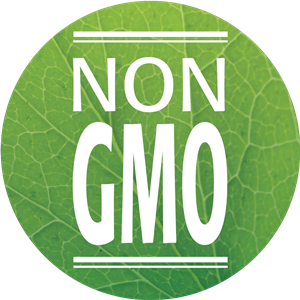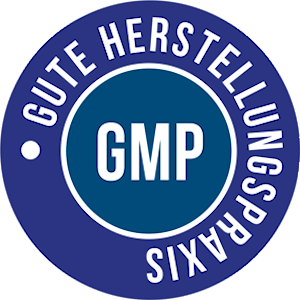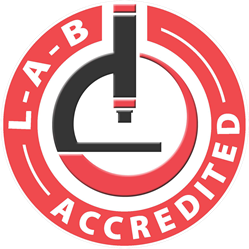Literatur zum Kollagen5 Plus
Literatur:
1 Mouw, J. K., Ou, G., & Weaver, V. M. (2014). Extracellular matrix assembly: a multiscale deconstruction. Nature reviews Molecular cell biology, 15(12), 771-785.
2 Owczarzy, A., Kurasiński, R., Kulig, K., Rogóż, W., Szkudlarek, A., & Maciążek-Jurczyk, M. (2020). Collagen-structure, properties and application. Engineering of Biomaterials, 23(156).
3 Elsevier Connect. Colágenos: tipos, composición, características y distribución en tejidos. Online verfügbar: https://www.elsevier.com/es-es/connect/medicina/colagenos-tipos-composicion-distribucion-tejidos [15/11/2022].
4 Henriksen, K., & Karsdal, M. A. (2016). Type I collagen. In Biochemistry of collagens, laminins and elastin. Academic Press. 1-11.
5 Franchi, M., Trirè, A., Quaranta, M., Orsini, E., & Ottani, V. (2007). Collagen structure of tendon relates to function. The Scientific World Journal, 7, 404-420.
6 Gelse, K., Pöschl, E., & Aigner, T. (2003). Collagens—structure, function, and biosynthesis. Advanced drug delivery reviews, 55(12), 1531-1546.
7 Gudmann, N. S., & Karsdal, M. A. (2016). Type II collagen. In Biochemistry of collagens, laminins and elastin. Academic Press. 13-20.
8 Park, K. S., Park, M. J., Cho, M. L., Kwok, S. K., Ju, J. H., Ko, H. J., ... & Kim, H. Y. (2009). Type II collagen oral tolerance; mechanism and role in collagen-induced arthritis and rheumatoid arthritis. Modern rheumatology, 19(6), 581-589.
9 Chiu, L. H., Lai, W. F. T., Chang, S. F., Wong, C. C., Fan, C. Y., Fang, C. L., & Tsai, Y. H. (2014). The effect of type II collagen on MSC osteogenic differentiation and bone defect repair. Biomaterials, 35(9), 2680-2691.
10 Karsdal, M. (2019). Biochemistry of collagens, laminins and elastin: structure, function and biomarkers. Academic Press.
11 Nielsen, M. J., & Karsdal, M. A. (2016). Type III collagen. In Biochemistry of Collagens, Laminins and Elastin. Academic Press. 21-30.
12 Wang, C., Brisson, B. K., Terajima, M., Li, Q., Han, B., Goldberg, A. M., ... & Han, L. (2020). Type III collagen is a key regulator of the collagen fibrillar structure and biomechanics of articular cartilage and meniscus. Matrix Biology, 85, 47-67.
13 Mak, K. M., Png, C. Y. M., & Lee, D. J. (2016). Type V collagen in health, disease, and fibrosis. The Anatomical Record, 299(5), 613-629.
14 Leeming, D. J., & Karsdal, M. A. (2016). Type V collagen. In: Biochemistry of collagens, laminins and elastin. Academic Press. 43-48.
15 Schmid, T. M., & Linsenmayer, T. F. (1987). Type X collagen. Structure and function of collagen types, 223-259.
16 Shen, G. (2005). The role of type X collagen in facilitating and regulating endochondral ossification of articular cartilage. Orthodontics & craniofacial research, 8(1), 11-17.
17 Gudmann, N. S., & Karsdal, M. A. (2016). Type X collagen. In: Biochemistry of collagens, laminins and elastin. Academic Press. 73-76.
18 León-López, A., Morales-Peñaloza, A., Martínez-Juárez, V. M., Vargas-Torres, A., Zeugolis, D. I., & Aguirre-Álvarez, G. (2019). Hydrolyzed collagen—Sources and applications. Molecules, 24(22), 4031.
19 Skov, K., Oxfeldt, M., Thøgersen, R., Hansen, M., & Bertram, H. C. (2019). Enzymatic hydrolysis of a collagen hydrolysate enhances postprandial absorption rate—a randomized controlled trial. Nutrients, 11(5), 1064.
20 Kwatra, B. (2020). Collagen supplementation: therapy for the prevention and treatment of osteoporosis and osteoarthritis: a review. WORLD J. Pharm. Pharm. Sci, 9, 589-604.
21 Lupu, M. A., Gradisteanu Pircalabioru, G., Chifiriuc, M. C., Albulescu, R., & Tanase, C. (2020). Beneficial effects of food supplements based on hydrolyzed collagen for skin care. Experimental and therapeutic medicine, 20(1), 12-17.
22 Lugo, J. P., Saiyed, Z. M., & Lane, N. E. (2015). Efficacy and tolerability of an undenatured type II collagen supplement in modulating knee osteoarthritis symptoms: a multicenter randomized, double-blind, placebo-controlled study. Nutrition journal, 15(1), 1-15.
23 Clark, K. L., Sebastianelli, W., Flechsenhar, K. R., Aukermann, D. F., Meza, F., Millard, R. L., ... & Albert, A. (2008). 24-Week study on the use of collagen hydrolysate as a dietary supplement in athletes with activity-related joint pain. Current medical research and opinion, 24(5), 1485-1496.
24 Proksch, E., Segger, D., Degwert, J., Schunck, M., Zague, V., & Oesser, S. (2014). Oral supplementation of specific collagen peptides has beneficial effects on human skin physiology: a double-blind, placebo-controlled study. Skin pharmacology and physiology, 27(1), 47-55.
25 Proksch, E., Schunck, M., Zague, V., Segger, D., Degwert, J., & Oesser, S. (2014). Oral intake of specific bioactive collagen peptides reduces skin wrinkles and increases dermal matrix synthesis. Skin pharmacology and physiology, 27(3), 113-119.
26 Schunck, M., Zague, V., Oesser, S., & Proksch, E. (2015). Dietary supplementation with specific collagen peptides has a body mass index-dependent beneficial effect on cellulite morphology. Journal of medicinal food, 18(12), 1340-1348.
27 Hexsel, D., Zague, V., Schunck, M., Siega, C., Camozzato, F. O., & Oesser, S. (2017). Oral supplementation with specific bioactive collagen peptides improves nail growth and reduces symptoms of brittle nails. Journal of cosmetic dermatology, 16(4), 520-526.
28 Liu, Y., Wang, X., & Hu, C. A. A. (2017). Therapeutic potential of amino acids in inflammatory bowel disease. Nutrients, 9(9), 920.
29 Kothapalli, D., Liu, S. L., Bae, Y. H., Monslow, J., Xu, T., Hawthorne, E. A., ... & Assoian, R. K. (2012). Cardiovascular protection by ApoE and ApoE-HDL linked to suppression of ECM gene expression and arterial stiffening. Cell reports, 2(5), 1259-1271.
30 Ruff, K. J., Endres, J. R., Clewell, A. E., Szabo, J. R., & Schauss, A. G. (2012). Safety evaluation of a natural eggshell membrane-derived product. Food and chemical toxicology, 50(3-4), 604-611.
31 Benson, K. F., Ruff, K. J., & Jensen, G. S. (2012). Effects of natural eggshell membrane (NEM) on cytokine production in cultures of peripheral blood mononuclear cells: increased suppression of tumor necrosis factor-α levels after in vitro digestion. Journal of medicinal food, 15(4), 360-368.
32 Ruff, K. J., & DeVore, D. P. (2014). Reduction of pro-inflammatory cytokines in rats following 7-day oral supplementation with a proprietary eggshell membrane-derived product. Modern Research in Inflammation. 19-25.
33 Ruff, K. J., Winkler, A., Jackson, R. W., DeVore, D. P., & Ritz, B. W. (2009). Eggshell membrane in the treatment of pain and stiffness from osteoarthritis of the knee: a randomized, multicenter, double-blind, placebo-controlled clinical study. Clinical rheumatology, 28(8), 907-914.
34 Ruff, K. J., DeVore, D. P., Leu, M. D., & Robinson, M. A. (2009). Eggshell membrane: a possible new natural therapeutic for joint and connective tissue disorders. Results from two open-label human clinical studies. Clinical Interventions in Aging, 4, 235.
35 Laurent, T. C., & Fraser, J. R. E. (1992). Hyaluronan 1. The FASEB journal, 6(7), 2397-2404.
36 Kalman, D. S., Heimer, M., Valdeon, A., Schwartz, H., & Sheldon, E. (2008). Effect of a natural extract of chicken combs with a high content of hyaluronic acid (Hyal-Joint®) on pain relief and quality of life in subjects with knee osteoarthritis: a pilot randomized double-blind placebo-controlled trial. Nutrition journal, 7(1), 1-9.
37 Oe, M., Tashiro, T., Yoshida, H., Nishiyama, H., Masuda, Y., Maruyama, K., ... & Fukui, N. (2015). Oral hyaluronan relieves knee pain: a review. Nutrition journal, 15(1), 1-10.
38 Guadagna, S., Barattini, D. F., Pricop, M., & Rosu, S. (2018). Oral hyaluronan for the treatment of knee osteoarthritis: a systematic review. Progr Nutr, 20, 537-44.
39 de Miranda, R. B., Weimer, P., & Rossi, R. C. (2021). Effects of hydrolyzed collagen supplementation on skin aging: a systematic review and meta‐analysis. International Journal of Dermatology, 60(12), 1449-1461.
40 Hsu, T. F., Su, Z. R., Hsieh, Y. H., Wang, M. F., Oe, M., Matsuoka, R., & Masuda, Y. (2021). Oral hyaluronan relieves wrinkles and improves dry skin: A 12-week double-blinded, placebo-controlled study. Nutrients, 13(7), 2220.
41 Murad, S., Grove, D., Lindberg, K. A., Reynolds, G., Sivarajah, A., & Pinnell, S. (1981). Regulation of collagen synthesis by ascorbic acid. Proceedings of the National Academy of Sciences, 78(5), 2879-2882.
42 Aghajanian, P., Hall, S., Wongworawat, M. D., & Mohan, S. (2015). The roles and mechanisms of actions of vitamin C in bone: new developments. Journal of Bone and Mineral Research, 30(11), 1945-1955.
43 DePhillipo, N. N., Aman, Z. S., Kennedy, M. I., Begley, J. P., Moatshe, G., & LaPrade, R. F. (2018). Efficacy of vitamin C supplementation on collagen synthesis and oxidative stress after musculoskeletal injuries: a systematic review. Orthopaedic journal of sports medicine, 6(10), 2325967118804544.
44 Pullar, J. M., Carr, A. C., & Vissers, M. C. (2017). The roles of vitamin C in skin health. Nutrients, 9(8), 866.
45 Shamloul, N., Hashim, P. W., Nia, J. J., Farberg, A. S., & Goldenberg, G. (2019). The role of vitamins and supplements on skin appearance. Cutis, 104(4), 220-224.
46 Seelig, M. S. (1994). Consequences of magnesium deficiency on the enhancement of stress reactions; preventive and therapeutic implications (a review). Journal of the American College of Nutrition, 13(5), 429-446.
47 Golf, S. W., Bender, S., & Grüttner, J. (1998). On the significance of magnesium in extreme physical stress. Cardiovascular Drugs and Therapy, 12(2), 197-202.
48 Reinhart, R. A. (1988). Magnesium metabolism: a review with special reference to the relationship between intracellular content and serum levels. Archives of internal medicine, 148(11), 2415-2420.
49 Laires, M. J., Monteiro, C. P., & Bicho, M. (2004). Role of cellular magnesium in health and human disease. Frontiers in Bioscience-Landmark, 9(1), 262-276.
50 Bo, S., & Pisu, E. (2008). Role of dietary magnesium in cardiovascular disease prevention, insulin sensitivity and diabetes. Current opinion in lipidology, 19(1), 50-56.
51 Harris, E. D., Rayton, J. K., Balthrop, J. E., DiSilvestro, R. A., & Garcia-de-Quevedo, M. (1980). Copper and the synthesis of elastin and collagen. In Ciba Foundation Symposium, 79, 163-182.
52 Valero Zanuy, M., & Hawkins Carranza, F. (2006). Influencia de la dieta en la salud ósea. Revista Española de Enfermedades Metabólicas Óseas, 15(5), 98-104.
53 Rucker, R. B., Kosonen, T., Clegg, M. S., Mitchell, A. E., Rucker, B. R., Uriu-Hare, J. Y., & Keen, C. L. (1998). Copper, lysyl oxidase, and extracellular matrix protein cross-linking. The American journal of clinical nutrition, 67(5), 996-1002.
54 Opsahl, W., Zeronian, H., Ellison, M., Lewis, D., Rucker, R. B., & Riggins, R. S. (1982). Role of copper in collagen cross-linking and its influence on selected mechanical properties of chick bone and tendon. The Journal of nutrition, 112(4), 708-716.
55 Wilson, T., Katz, J. M., & Gray, D. (1981). Inhibition of active bone resorption by copper. Calcified tissue international, 33(1), 35-39.
56 Philips, N., Samuel, P., Parakandi, H., Gopal, S., Siomyk, H., Ministro, A., ... & Borkow, G. (2010). Stimulation of cell proliferation and expression of matrixmetalloproteinase-1 and interluekin-8 genes in dermal fibroblasts by copper. Connective tissue research 51(3), 224-229.
57 Philips, N., Samuel, P., Parakandi, H., Gopal, S., Siomyk, H., Ministro, A., ... & Borkow, G. (2012). Beneficial regulation of fibrillar collagens, heat shock protein-47, elastin fiber components, transforming growth factor-β1, vascular endothelial growth factor and oxidative stress effects by copper in dermal fibroblasts. Connective tissue research, 53(5), 373-378.
58 Kothapalli, C. R., & Ramamurthi, A. (2009). Copper nanoparticle cues for biomimetic cellular assembly of crosslinked elastin fibers. Acta biomaterialia, 5(2), 541-553.
59 Sheng, Y., Abreu, I. A., Cabelli, D. E., Maroney, M. J., Miller, A. F., Teixeira, M., & Valentine, J. S. (2014). Superoxide dismutases and superoxide reductases. Chemical reviews, 114(7), 3854-3918.
60 Olivares, C., & Solano, F. (2009). New insights into the active site structure and catalytic mechanism of tyrosinase and its related proteins. Pigment cell & melanoma research, 22(6), 750-760.
61 Gierlinger, N., Sapei, L., & Paris, O. (2008). Insights into the chemical composition of Equisetum hyemale by high resolution Raman imaging. Planta, 227(5), 969-980.
62 Jugdaohsingh, R., Tucker, K. L., Qiao, N., Cupples, L. A., Kiel, D. P., & Powell, J. J. (2004). Dietary silicon intake is positively associated with bone mineral density in men and premenopausal women of the Framingham Offspring cohort. Journal of Bone and Mineral Research, 19(2), 297-307.
63 Jugdaohsingh, R. (2007). Silicon and bone health. The journal of nutrition, health & aging, 11(2), 99.
64 Jugdaohsingh, R., Tucker, K. L., Kiel, D. P., Qiao, N., & Powell, J. J. (2003, May). Silicon intake is a major dietary determinant of bone mineral density in men and pre-menopausal women of the Framingham Offspring Cohort. In Bone, 32 (5), 192-192.
65 Macdonald, H. M., et al. (2005). Dietary silicon intake is associated with bone mineral density in premenopausal women and postmenopausal women taking HRT. Journal of Bone and Mineral Research, 20 (9).
66 Reffitt, D. M., Ogston, N., Jugdaohsingh, R., Cheung, H. F. J., Evans, B. A. J., Thompson, R. P. H., ... & Hampson, G. N. (2003). Orthosilicic acid stimulates collagen type 1 synthesis and osteoblastic differentiation in human osteoblast-like cells in vitro. Bone, 32(2), 127-135.
67 Wickett, R. R., Kossmann, E., Barel, A., Demeester, N., Clarys, P., Vanden Berghe, D., & Calomme, M. (2007). Effect of oral intake of choline-stabilized orthosilicic acid on hair tensile strength and morphology in women with fine hair. Archives of dermatological research, 299(10), 499-505.
68 Barel, A., Calomme, M., Timchenko, A., Paepe, K. D., Demeester, N., Rogiers, V., ... & Vanden Berghe, D. (2005). Effect of oral intake of choline-stabilized orthosilicic acid on skin, nails and hair in women with photodamaged skin. Archives of dermatological research, 297(4), 147-153.
69 Duteil, L., Roussel, C. Q., Bruno-Bonnet, C., & Lacour, J. P. (2018). Effect of low dose type I fish collagen peptides combined or not with silicon on skin aging signs in mature women. JOJ Case Stud, 6(4), 001-005.
70 Crespo, E. (2001). El boro, elemento nutricional esencial en la funcionalidad ósea. Rev EspCirOsteoart, 206, 88-95.
71 Aşkar, T. K., Hilal, E. R., & Demirdöğen, R. E. (2018). The Effects of Boron on Bone Metabolism as a Nutraceutical: A Review. Avrasya Sağlık Bilimleri Dergisi, 1(1), 7-12.
72 Naghii, M. R. (1999). The significance of dietary boron, with particular reference to athletes. Nutrition and Health, 13(1), 31-37.
73 Werbach, M. R. (2000). Nutritional strategies for treating chronic fatigue syndrome. Alternative Medicine Review, 5(2), 93-108.
74 Sahley, B. J., Birkner, K. M., & Birkner, K. M. (1999). Malic Acid and Magnesium for Fibromyalgia and Chronic Pain Syndrome. Pain & Stress Publications.
75 Ferreira, I., Ortigoza, Á., & Moore, P. (2019). Magnesium and malic acid supplement for fibromyalgia. Medwave, 19(4), 7633.
76 Werbach, M. R. (2000). Nutritional strategies for treating chronic fatigue syndrome. Alternative Medicine Review, 5(2), 93-108.
77 Gil, Mª Esperanza Crespo & María Concepción Navarro Moll (2012). La raíz de harpagofito en el tratamiento de las afecciones reumáticas. Revista de fitoterapia 12(1). 5-20.
78 Álamo, C., García, P. G., Muñoz, F. L., & Agueda, B. M. (2004). Propiedades antiinflamatorias de Harpagophytum procumbens:¿ usos tradicionales o evidencia científica?. Revista de fitoterapia, 4(2), 155-156.



